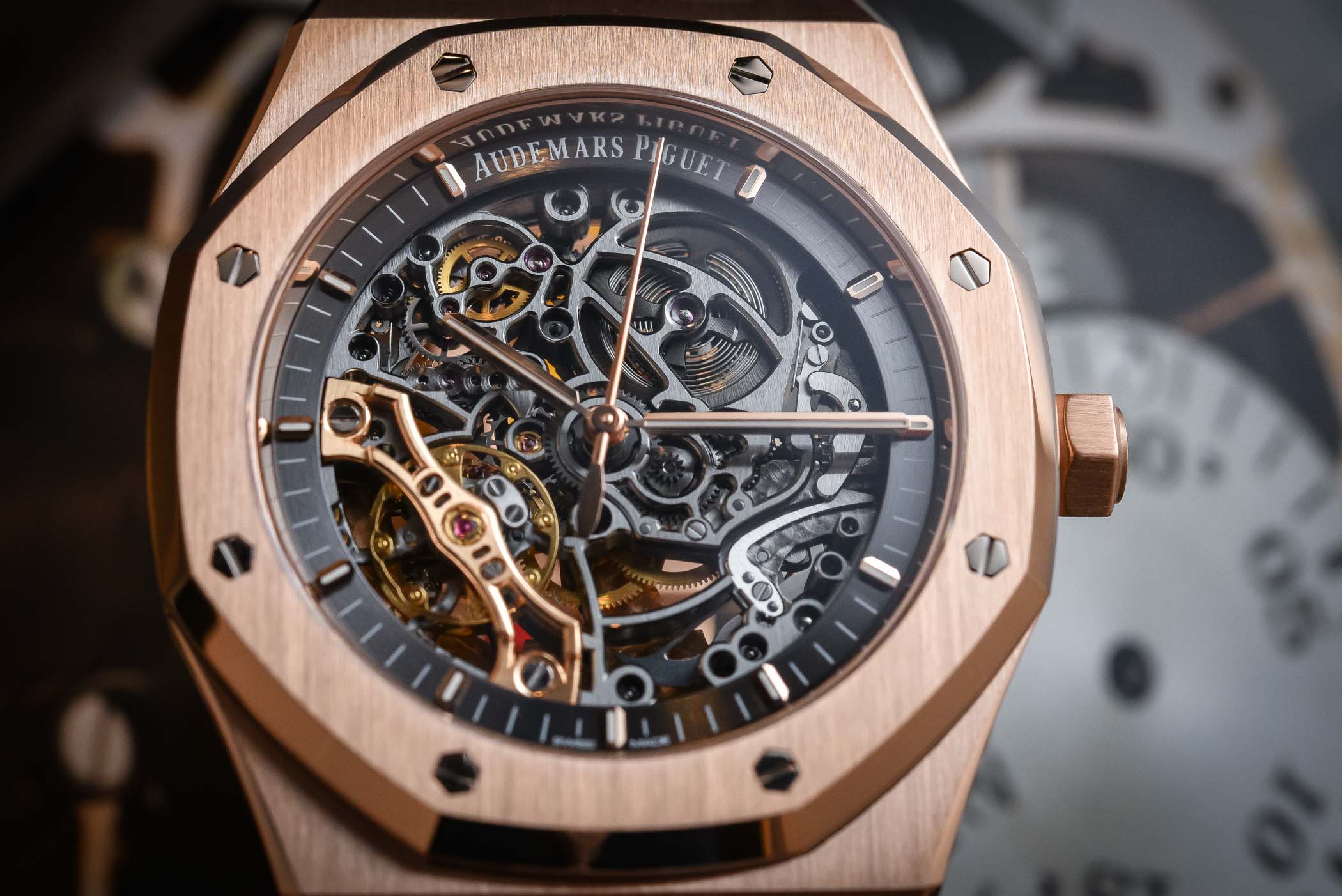VIDEO – The Audemars Piguet Royal Oak Double Balance Wheel Openworked Fully Explained (and the fun story on how it came to life, by the CEO)
At the SIHH 2016, Audemars Piguet introduced a new version of its Royal Oak Openworked, and this time, it featured a Double Balance Wheel… Why replace this superb model? And why have two balances? We all know that images are better than words in order to understand, so let’s turn the floor over to the CEO of Audemars Piguet, François-Henry Bennahmias (and you’ll see, there’s a fun story behind the creation of this watch) and Gilles Pellet, Head of Product Quality Department at Audemars Piguet, to discover the superb and technically-advanced Audemars Piguet Royal Oak Double Balance Wheel Openworked 15407.
One of the boldest models in the Royal Oak collection, alongside the classical 15400 and the ultra-thin 15202, has always been the Openworked Selfwinding version 15305 – so-to-say, a connoisseur’s watch, made for the collectors who care about watchmaking and who know how to recognize a true Haute-Horlogerie execution and decoration. This watch, in a 39mm case, features an evolution of the well-known calibre 3120, in a fully skeletonized version, finished in a superb way: anglages executed by hand, multiple inner and outer angles… Yet, in 2016, Audemars Piguet decided that this watch should be updated, by introducing the new Royal Oak Double Balance Wheel Openworked reference 15407. Why would they do that?
First of all, this new Openworked version updates its case to a 41mm diameter, in line with the rest of the “automatique” collection (understand here the 15400). But that’s not the main evolution point. What impresses most is the addition of a second hairspring to the regulating organ of the calibre 3120. What could be the advantages of such a feature? There are different perspectives to take into account. The first one is about visual pleasure. Having a double balance wheel, one of them being placed on the dial side of the watch, allows the wearer to enjoy the view on the regulating organ’s ballet even when wearing his watch – and also when observing the movement…
However, the main upgrade concerns the technical aspects, mainly the chronometrie. Placing this double balance wheel device on a classical calibre 3120 allows to properly measure its benefits, in comparison to a traditional “single balance”. The idea was to use the advantages of having two balance springs, without the issues that come with them. Having a double spring increases the precision. However, this construction (when you have two hairsprings on the same side of a single balance) is known to be difficult to adjust and does create extra friction on the balance staff. In an escapement with one spring, an error occurs due to the point where the spring is attached to the hairspring stud. One solution to solve it was the Breguet terminal curve (which already solves this issue quite well). Another effect is the error you have in the alloy of the spring itself. Taking 2 springs made of the same alloy and set them 180° apart cancels this completely, which benefits the overall chronometric performance of the watch.
The idea of having not a dual-hairspring but a double balance, meaning a construction with a balance staff carrying one balance and one hairspring on each side, is to allow to regulate the watch from each side of the movement. Because there are two variable inertia balances placed oppositely (each of them being adjusted by 8 inertia-blocks/masselottes), it means that the weight is perfectly distributed around the balance staff and that watchmakers can extremely finely tune the watch, in all positions. Also, because the weight is equal on both sides of the balance staff, it means that frictions are reduced and also better distributed – explaining the advantage of a double-balance compared to a dual-hairspring on a single balance.
Finally, there’s the look of this movement… With these superb decorations and the pink-gold coloured bridge, which contrasts in this anthracite environment. The entire calibre 3132 is opened and completely hand finished, with numerous inner and outer angles that we know can only be the product of the human hand and of hours of painstaking work.
More details can be found on this watch on www.audemarspiguet.com.





